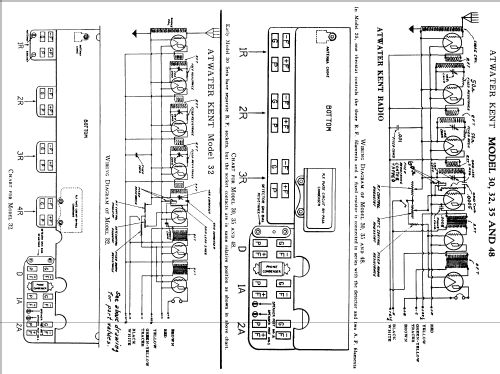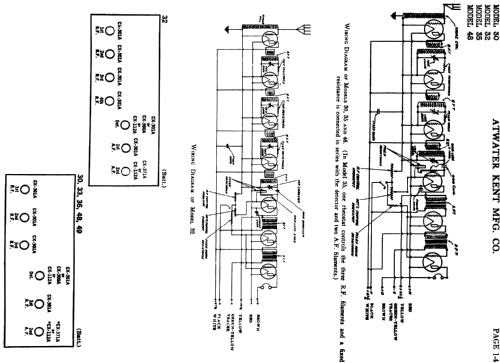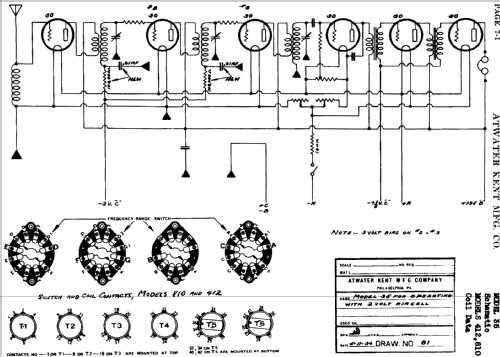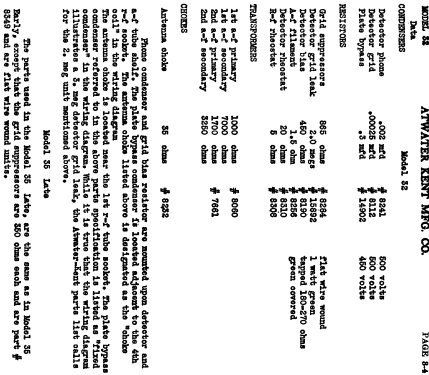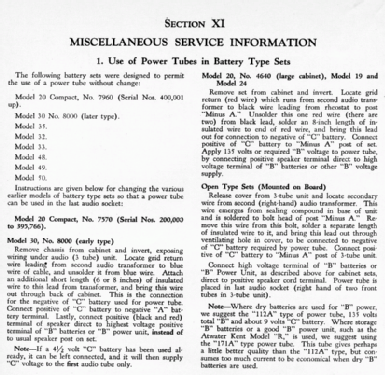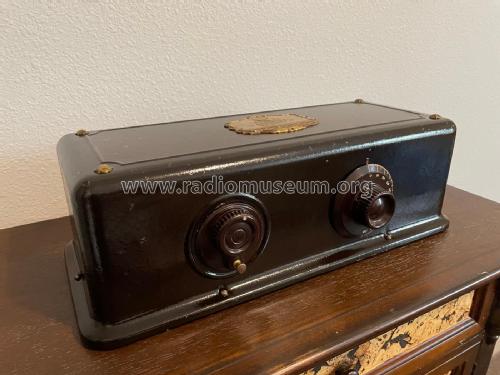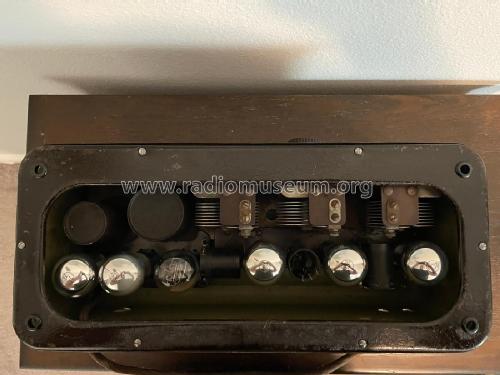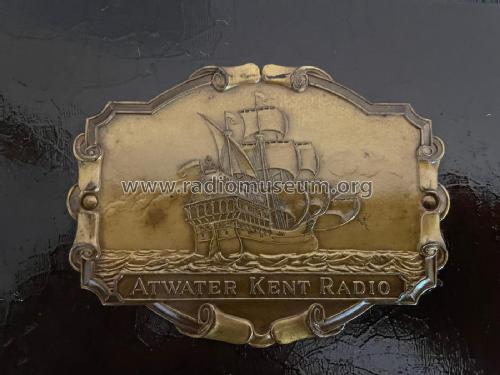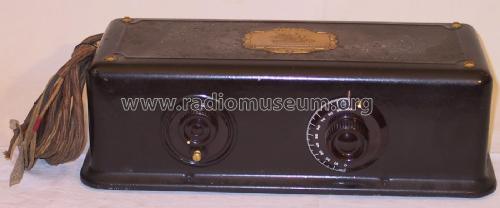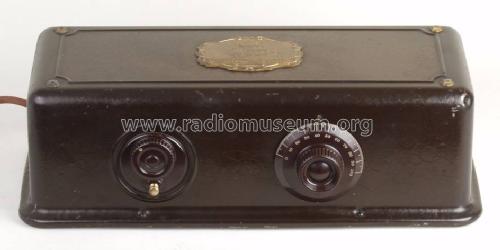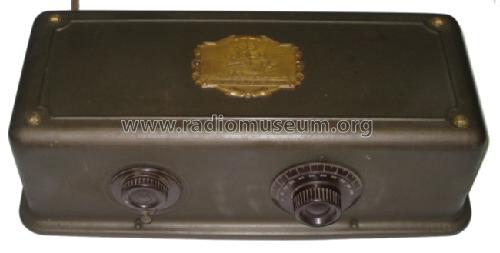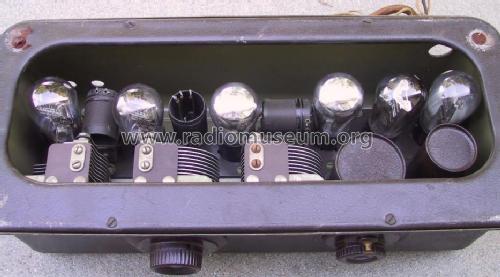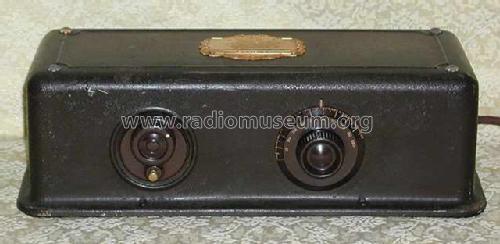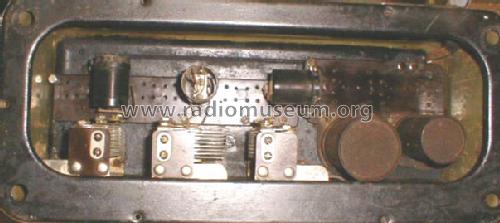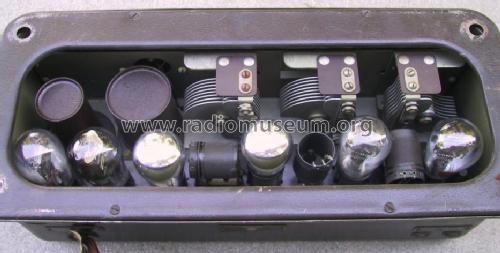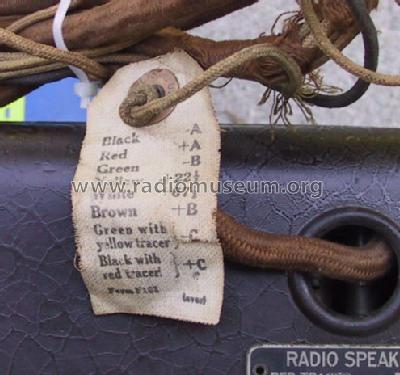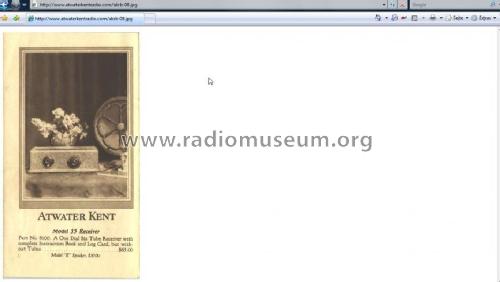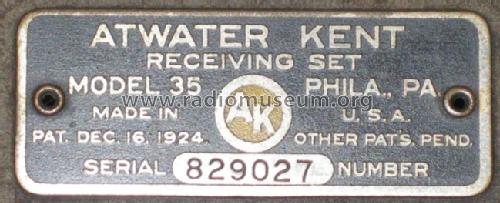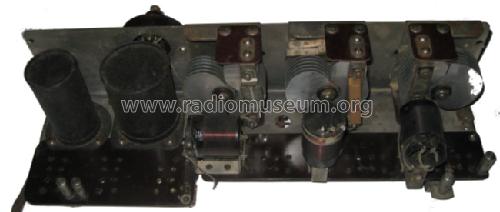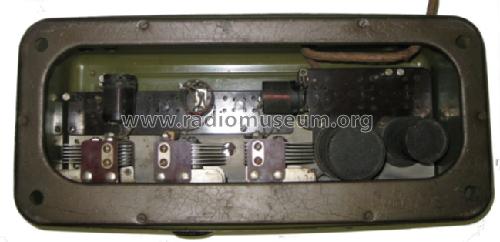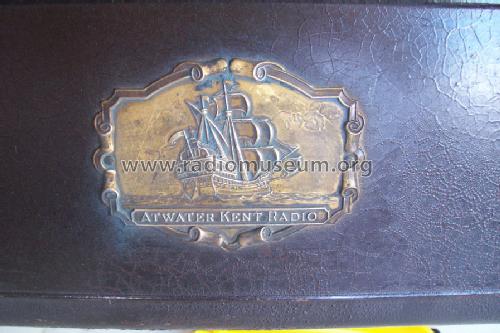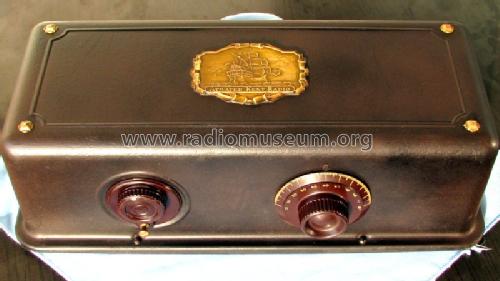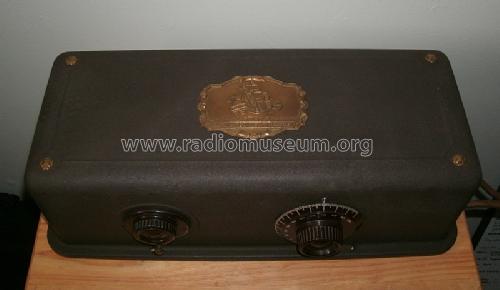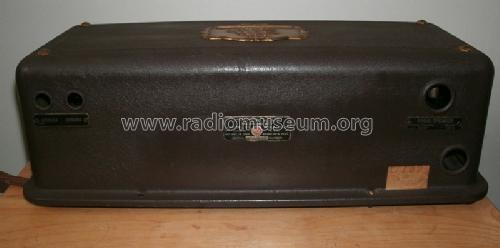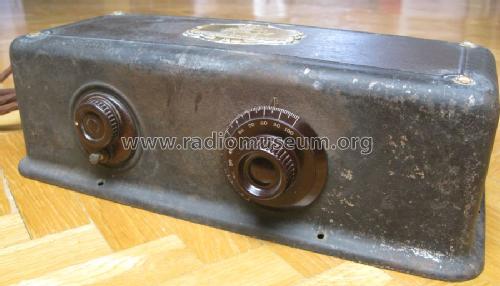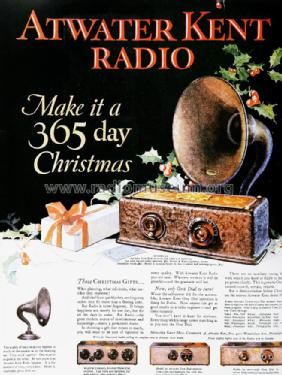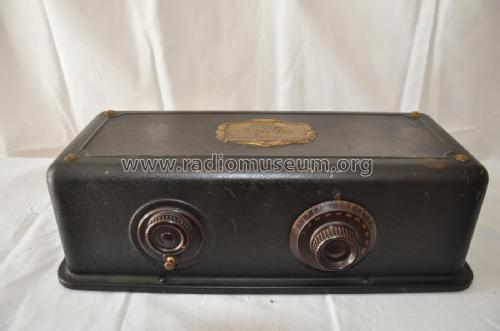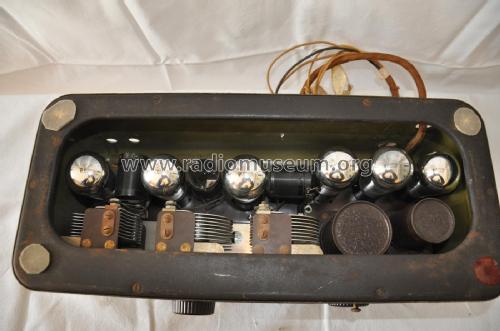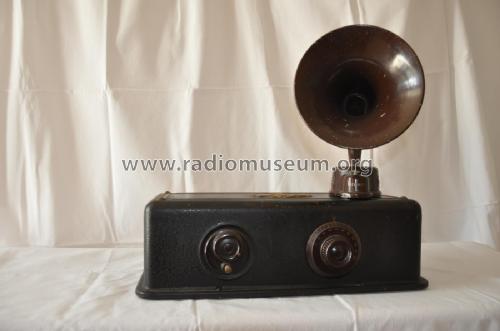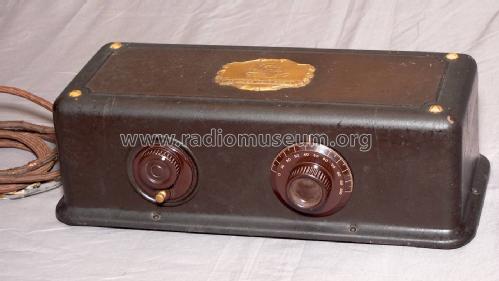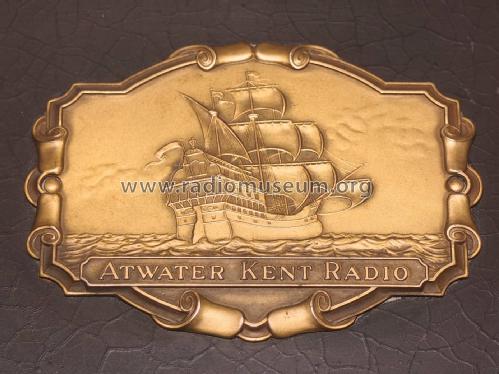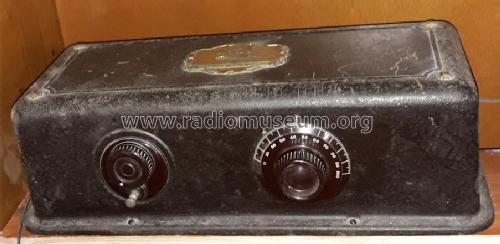8100 Model 35 Table model
Atwater Kent Mfg. Co.; Philadelphia, USA
- Pays
- Etats-Unis
- Fabricant / Marque
- Atwater Kent Mfg. Co.; Philadelphia, USA
- Année
- 1926
- Catégorie
- Radio - ou tuner d'après la guerre 1939-45
- Radiomuseum.org ID
- 33247
Cliquez sur la vignette du schéma pour le demander en tant que document gratuit.
- No. de tubes
- 6
- Principe général
- Récepteur TRF - sans réaction (pas régénératif)
- Circuits accordés
- 3 Circuits MA (AM)
- Gammes d'ondes
- PO uniquement
- Tension / type courant
- Piles (rechargeables ou/et sèches) / 6 & 90 Volt
- Haut-parleur
- - Ce modèle nécessite des HP externes
- Matière
- Boitier métallique
- De Radiomuseum.org
- Modèle: 8100 Model 35 [Table model] - Atwater Kent Mfg. Co.;
- Forme
- Modèle de table générique
- Dimensions (LHP)
- 17.2 x 5.25 x 7.5 inch / 437 x 133 x 191 mm
- Remarques
-
One single rheostat only; One dial (primary tuning control knob) Detector can be CX-301A, CX-300A or CX-112A. 2nd AF can be CX-371A or CX-112A.
Price in Italy, 1928: 2300 ITL.
In Italy it was supplied complete with USA tubes and Atwater-Kent loudspeaker, and batteries for the filament and plate voltages.
- Poids net
- 5.5 kg / 12 lb 1.8 oz (12.115 lb)
- Prix de mise sur le marché
- 70.00 $
- Source extérieure
- Ernst Erb
- Source du schéma
- Rider's Perpetual, Volume 1 = 1931/1934 (for 1919-1931)
- Littérature
- Collector's Guide to Antique Radios 4. Edition
- Schémathèque (1)
- A.Atwater Kent, The Man, 2002
- Schémathèque (2)
- -- Original prospect or advert (La Radio per Tutti, Italy, dossier number 3, 1928)
- D'autres Modèles
-
Vous pourrez trouver sous ce lien 508 modèles d'appareils, 332 avec des images et 332 avec des schémas.
Tous les appareils de Atwater Kent Mfg. Co.; Philadelphia, USA
Collections
Le modèle 8100 fait partie des collections des membres suivants.
Contributions du forum pour ce modèle: Atwater Kent Mfg. Co: 8100 Model 35
Discussions: 1 | Publications: 4
Hello folks,
I have a two AK 35 in my workshop awaiting restoration. They are in a fairly good condition.
The question I have is related to the paint these ones had.
The thing is that mine, and I think all the ones I have ever seen on internet, have the paint deteriorated and crackled.
Like this:


So the question is... the original paint was all solid and flat? Or did it come with some sort of crackle that with time deteriorated?
OR... is it that being a metal case, with the temprature changes, the case caused forces that eventually broke the layer of bright finish?
A couple more pics of details:


These last two, show that there is still some crackle, but without the top layer being deteriorated..
All in all, any ideas of how I should process the cabinet will be appreciated.
REGARDS!
Javier Albinarrate, 14.Sep.11
